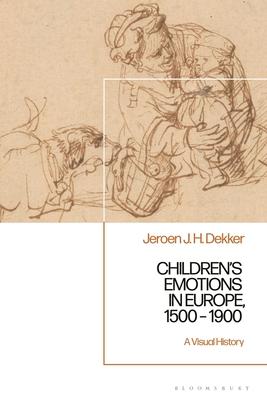This book gives you the historical sensation of coming face to face with the bodily expression and regulation of children's emotions over time. The study does this by encouraging you to look through the eyes of well-known artists, like Albrecht Drer, Domenico Ghirlandaio, Jan Steen, Antony van Dyck, Rembrandt, and Titian in early modern Europe, and Jean-Baptiste Simon Chardin, Thomas Lawrence, Jean-Honor Fragonard, Philipp Otto Runge, Willem Bartel van der Kooi, Paul Gauguin, Auguste Renoir, and Jozef Israls in the late 18th and 19th centuries. These sources are supplemented by works from less-famous artists, as well as popular emblem books, child-advice manuals, observations from the emerging child sciences, and personal documents.
Jeroen Dekker observes children's emotions mainly in the child's world and in the domestic emotional space, and connects them with history's ongoing, underlying discourse on education and the emotions. This discourse was developed by theologians, philosophers, and moralists like Augustine, Aquinas, Erasmus, Descartes, Jacob Cats, John Locke and Jean-Jacques Rousseau, by Romantic educationalists like Friedrich Frbel and Ellen Key, and by scientists like Charles Darwin and William James who emphasized the biological instead of the moral fundament of children's emotions. The story of children's emotions is told in the context of cultural movements like the Renaissance, Humanism, the Reformation, the Enlightenment, Romanticism, and the starting Age of Child Science. Children's Emotions in Europe, 1500 - 1900 crucially highlights the continuous co-existence of regulation-oriented and child-oriented educational views on children's emotions.
Book
Children's Emotions in Europe, 1500 - 1900: A Visual History
(Write a Review)
Hardcover
$127.78
This book gives you the historical sensation of coming face to face with the bodily expression and regulation of children's emotions over time. The study does this by encouraging you to look through the eyes of well-known artists, like Albrecht Drer, Domenico Ghirlandaio, Jan Steen, Antony van Dyck, Rembrandt, and Titian in early modern Europe, and Jean-Baptiste Simon Chardin, Thomas Lawrence, Jean-Honor Fragonard, Philipp Otto Runge, Willem Bartel van der Kooi, Paul Gauguin, Auguste Renoir, and Jozef Israls in the late 18th and 19th centuries. These sources are supplemented by works from less-famous artists, as well as popular emblem books, child-advice manuals, observations from the emerging child sciences, and personal documents.
Jeroen Dekker observes children's emotions mainly in the child's world and in the domestic emotional space, and connects them with history's ongoing, underlying discourse on education and the emotions. This discourse was developed by theologians, philosophers, and moralists like Augustine, Aquinas, Erasmus, Descartes, Jacob Cats, John Locke and Jean-Jacques Rousseau, by Romantic educationalists like Friedrich Frbel and Ellen Key, and by scientists like Charles Darwin and William James who emphasized the biological instead of the moral fundament of children's emotions. The story of children's emotions is told in the context of cultural movements like the Renaissance, Humanism, the Reformation, the Enlightenment, Romanticism, and the starting Age of Child Science. Children's Emotions in Europe, 1500 - 1900 crucially highlights the continuous co-existence of regulation-oriented and child-oriented educational views on children's emotions.Hardcover
$127.78